A dissertation by Suzette Lalime Davidson, 1994
above Louis Zephirin Masse, Malvena P. Masse, and Edith Starrett Masse about 1903
Full text of undergraduate thesis via the Franco American Women’s Institute
A dissertation by Suzette Lalime Davidson, 1994
above Louis Zephirin Masse, Malvena P. Masse, and Edith Starrett Masse about 1903
Full text of undergraduate thesis via the Franco American Women’s Institute

Recently, I have been asked to speak about a project near and dear to my heart, one to which I contributed many years of labor and creativity. I was able to work with excellent colleagues. Mills College is no more, but the history of the place, the lives of the women who found their way to this college are very vivid and compelling. The alumni want to keep this memory alive, just as we did in this oral history project, Fires of Wisdom.
For many years, I was active with my college’s Alumnae Association. I helped to found a group called Fires of Wisdom: the Mills College Alumnae Oral History Project. I had an internship as an undergraduate at Mills College. Our goal was to interview the eldest living alumnae and friends of the college first and to meet women who were returning to campus for their “golden” reunion of 50 years or more. We wanted to make these stories of traditions and memories available at the Mills College Library, so other researchers could have access to what we learned.
We went about doing interviews with the eldest of our college alumnae and Mills friends. We wrote curriculum and researched training methods for teaching volunteers how to conduct oral history interviews; we drew on the work of other oral history groups like the Regional Oral History Office at University of California at Berkeley. We initially found assistance from professors at Mills, like Marianne Sheldon and at other schools across the U.S. who were implementing this type of research. Oral history methodology at that time was not in the forefront of academia. In fact, when I begun this work, there was only one book on the topic at our campus library. All of the interviews, the teaching, the assistance for this project was done by volunteers like me, with very little funding from the Alumnae Association. Many years after we began this work, we combined forces with other scholars to archive our interviews with the Oakland Living History Project at the Mills Olin Library.
You can look up the archives of the Fires of Wisdom Mills College Alumnae Oral History Project in the Mills Olin Library here.
Mills College differed from the many colleges in the San Francisco Bay Area in that it is was, until recently, a women’s college for the undergraduate programs. After World War II, the graduate programs were coeducational. One of the most famous graduates of Mills was musician Dave Brubeck. You may have seen an amazing interview with Mr. Brubeck, a native of California, in Ken Burns’ jazz documentary.
Through our interviews we learned what campus and off-campus life was like in various decades before the 1990s. We heard about past traditions at the college, student perspectives on historical events and about the formidable personality, mission and rhetorical skills which comprised the character of Aurelia Henry Reinhardt, the college president from 1916-1943. During her time at Mills, Aurelia experienced two world wars and addressed issues of these conflicts openly and with a compassion that makes her unique. Her commitment to women’s education was inspiring. We began dedicating our work to this intriguing past president of the college when our volunteer group began doing Dramatic Readings at Mills College Reunions, complete with slide shows of our interviewees (also known as narrators) and with our group dressed in vintage dress to represent the decades of women we interviewed.

For this project, we made every effort to locate and interview alumnae of color and find people with diverse economic and cultural backgrounds, not just the famous folks with the most successful careers or those who already had the most written accounts or interviews of their lives. Those had already been done. We wanted to create a kind of mosaic of perspectives on life in the SF Bay Area during the tenure of President Reinhardt.
While I was at Mills College, (1992-1994) as a Resuming Student, I commuted to campus. I was a member of the the Mary Atkins resuming students’ lounge, where nontraditional-aged students could form study groups and support each other as we returned to school. Some of my classmates were over 40 years old, some were in their seventies. Many had children to support and jobs while completing their undergraduate degrees. I was 29 when I graduated with my Bachelor of Arts degree in American Studies, after many years of working and attending college part-time at other universities. The Olin Library on Mills campus was a refuge for me as was the Reinhardt Alumnae House, where I did much of my research and met up with advisers, interviewees and volunteers for the project.
During my 11 years of volunteering for the Alumnae Association, I made a lot of friends who were alumnae. I met students and college staff members. To thank volunteers for their time, we had to find a fun way to gather. So we started having tea.

Through Fires of Wisdom, which we named after the college’s anthem or hymn, the core group of volunteers started some new traditions and reclaimed some others. One is based on stories of Holiday Tea with the President Reinhardt. Several members of our group collect vintage clothing. Many of us just like hats. We all seem to like tea. So, we dress up, with our hats, gloves, shoes, purses and enjoy High Tea at Lovejoy’s Tea in San Francisco..
Although we have since archived all of the interviews we did with Mills College Alumnae and friends at the Olin Library, we still like to get together, dress up and share our stories. Here is this year’s photograph of our participants:
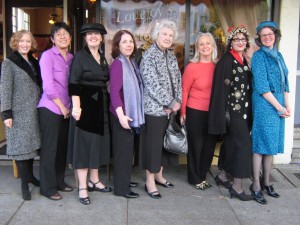
The other members of the group in the 2011 photo are, left to right: Moya Stone, Erika Young, Betsy McCall, Beth Woolbright, Jane King, Cecille Caterson, Kathleen McCrae and on the far right, Malvena Pearl’s Emporium proprietor, Suzette Lalime Davidson.
Please note that my dear friend Jane Cudlip King is at the center, in the photo, here. She graduated from Mills in 1942 and had done decades of volunteer service with the college. She prepared young people to take the S.A.T. and had the best memory for the works of Shakespeare quotations that I’ve ever encountered. She also did a great impression of President Aurelia Henry Reinhardt, with all of her vast elocutionary skills.
Two people who I meant to have in this photo were the other founders of the project: Kristen B. Caven and Penny Peak. We trained more than 30 volunteers for this project and only a handful are as enthusiastic about “dressing up” as we are.
We are grateful to Nancy MacKay, formerly of the Mills College Library, for assisting with the archive of all the interviews; Professor Marianne Sheldon, Professor Andy Workman and Professor Sherry Katz.
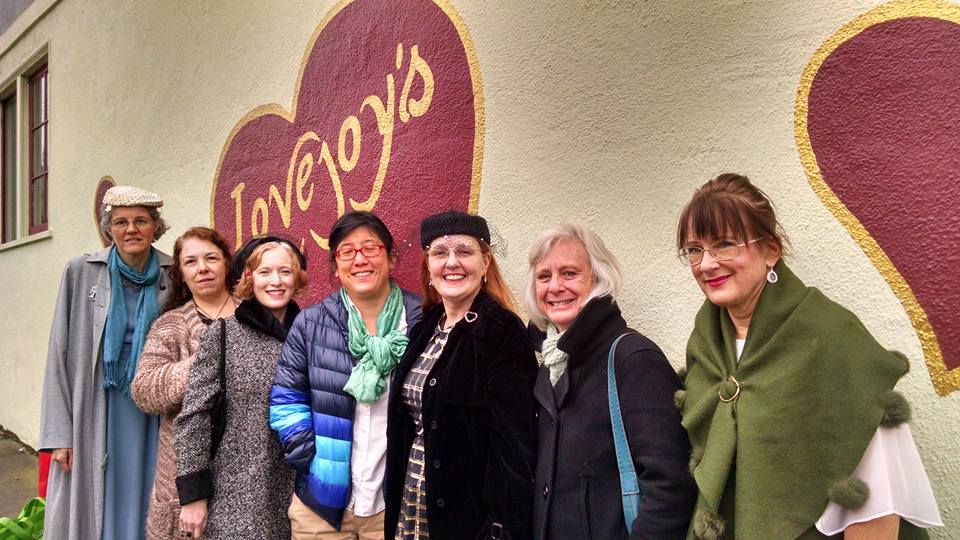
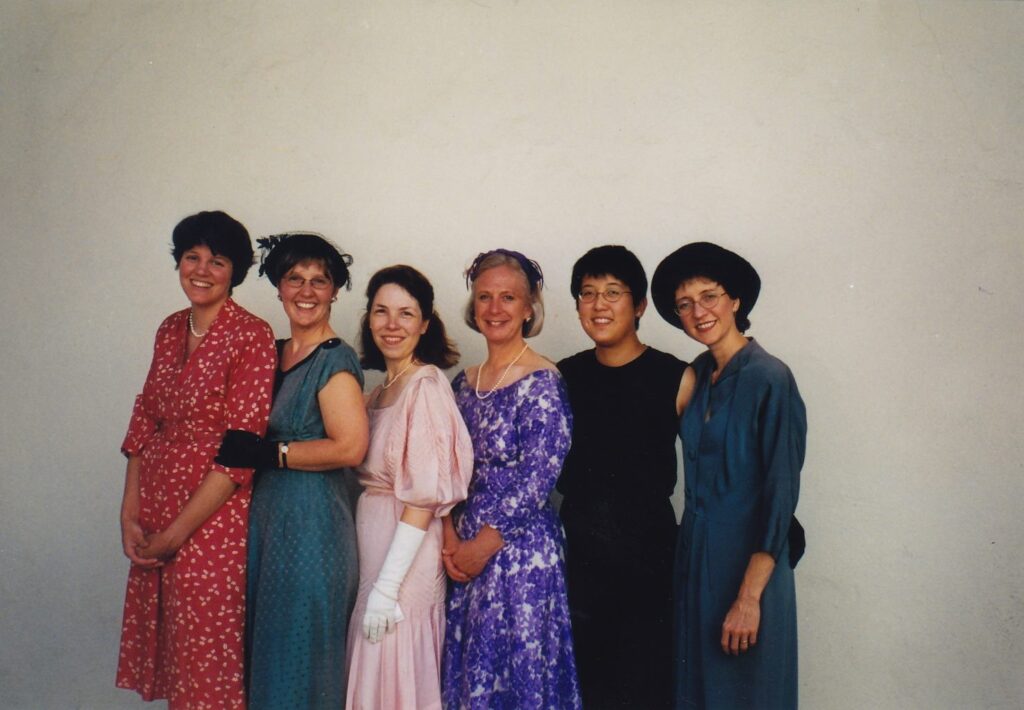
Because the 2022 program was fantastic, the proprietor and her friends will be visiting the Grand Lake Theater again, soon. In December, there will be a special showing by the Film Noir Foundation. This one is in 3-D!
The virtual flyer provides more information:
SAVE THE DATE: NOIR CITY returns to Oakland’s Grand Lake Theatre January 20 – 29, 2023, celebrating 20 years of the Film Noir Foundation’s flagship festival! Festival program and details to be announced December 13 at NOIR CITY Xmas and on NoirCity.com thereafter.
Happy 20th Anniversary!
Passports Now on Sale for NOIR CITY 20
NOIR CITY 20 passports (10-day/24-film all-access passes) are now available at Brown Paper Tickets for $200, a savings of $40 over the regular ticket price for 24 films. The NOIR CITY 20 Passports will also be available for sale at the FNF’s merchandise table at NOIR CITY Xmas. Remember — the NOIR CITY Passport makes a perfect holiday gift for the noir lover in your life!
The shop on Etsy with offerings for other costume enthusiasts, has been doing a brisk business, lately. We’ve offered books ranging in publication dates of the 1920s – 1980s. We also feature two of our one-of-a-kind each small statues. Here are some photos. The Etsy shop is located here.
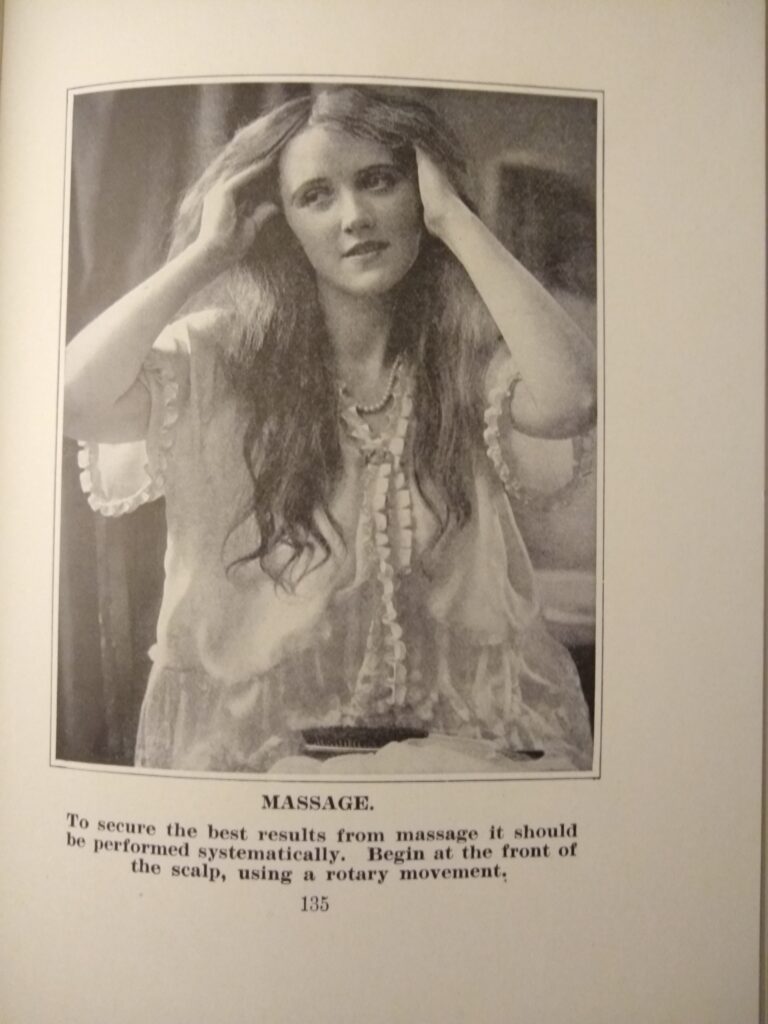
I researched seven technical tools for teachers to adapt and utilize when teaching adult learners history and literature. The goals of this Resource List is to provide instructors with options for an active environment in the classroom, whether it is traditional or online. These tools are mean to enhance the “community of inquiry” (Merriam, et al, 2020, p.33) and create within the classroom a dynamic atmosphere of sharing experience and engaged discussion, suited to students who will have a variety of learning styles, strengths, cultural backgrounds and interests. Each tool described below includes a link to the source, to an example. I provide a complete list with citations to academic reference material at the end.
Videos benefit students who have auditory and visual learning styles. 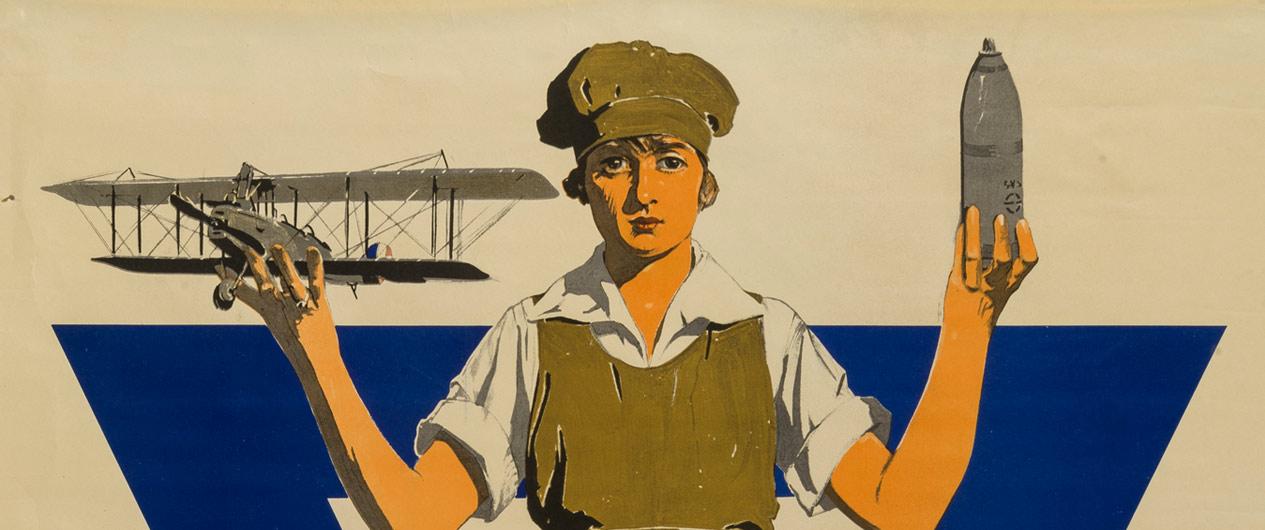

The student who uses a tablet will have the benefit of direct interact interaction — both visually and auditorily– with the material than they might with a book. This tool engages the student in several ways.
Students will learn to recognize the concepts of academic integrity and the understand which sources are appropriate or preferable to cite in academic writing: .org, .edu and .gov. They will find the value of navigating websites that offer peer-reviewed material. This process can encourage discussions of sources and integrate them with the process of selecting their topic for a project, engaging the students in inquiry: what era in history will they choose? What pieces of literature? Here’s an intensive look at this topic:
https://www.edutopia.org/article/how-get-benefits-interactive-notebooks-digital-formats
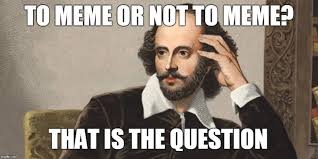
Memes and GIFs can be used to assist students who are working on a reflective writing project, or as a warm up or icebreaker in the class. At that point, a short group activity of students paired of can allow those familiar with these communication styles (Reyes, et al, 2018) to explain them to students who are new to this medium. GIFs and memes can be tools for students:
This article lays out several reasons to use GIFs and memes as classroom tools – to enhance communication and engagement with the students, among other benefits: Memes and GIFs as powerful classroom tools: https/facultyfocus.com/articles/teaching-with-technology-articles/memes-and-gifs-as-powerful-classroom-tools/
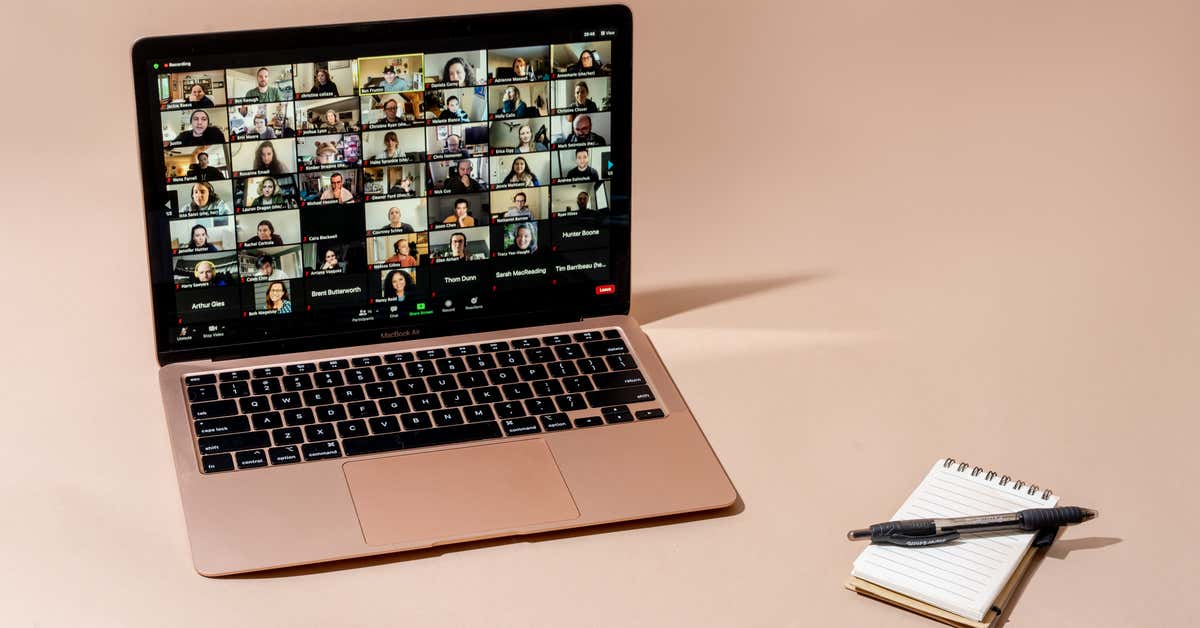
There are several benefits to video conferencing:
The instructor needs to monitor the discussion and make sure those who speak are heard and to be present and available for questions. Providing structure for the class, giving clear instructions about the deadlines and timelines for the work, respecting diverse cultures, races and economic classes of the students and making sure each participant is heard are all elements that the teacher will use to model academic integrity.
What Is Video Conferencing? https://youtu.be/N9JFvHKIbcM
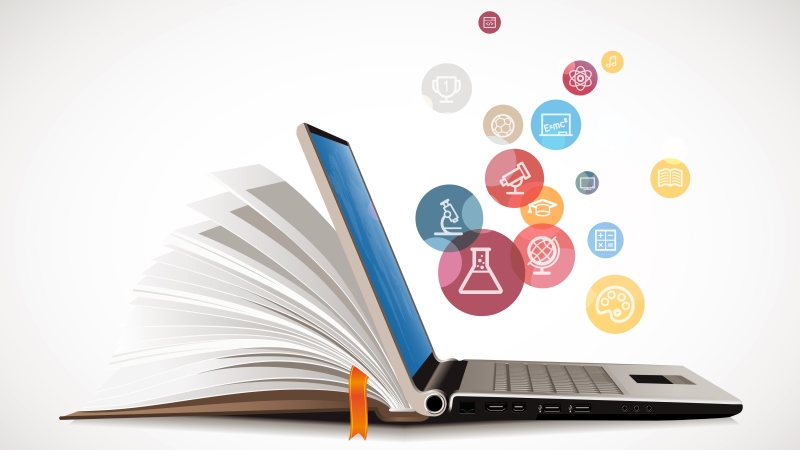
An active discussion with clear times for completing cited, significant responses and replies from instructors and classmates provide a vital part of the online classroom. The benefits to the students include:
Academic integrity is modeled to the students by the methods that the instructor shapes and facilitates the discussion and encourages them to participate. The students can use this as a practice ground for shaping larger writing projects, ask questions about citation and assignment formatting or ask technical or time management questions. There are many levels to learning with this tool.
https://www.higheredgeek.com/blog/the-value-of-student-engagement-in-digital-education

Social media has the potential to engage students in the way that memes, GIFs and the more structured academic discussion forums do.
However, academic integrity or simple civility can be lacking in discussion groups, and students will need to use their best judgement when using this tool. This may be a testing ground to help students transfer some of their same enthusiasm to online discussion groups for the class topics of history and literature. Social media will engage students and that is part of the teaching/learning process.
Using social media in the classroom: https://www.youtube.com/watch?v=ZX3udVdEFnA

Students can learn a lot from creating an entry – or even researching the validity of Wikipedia articles.
This is another opportunity to model academic integrity: how has the person been depicted in the past? What were the sources used then? Is it important to portray people whose work has never become “famous?” Why? These lines of inquiry lead to the reason that we study history and literature.
I found this article on using this exercise to be insightful. I’ve edited Wikipedia in small groups and found it very engaging. I hope that other instructors might also find this tool to be helpful: Using Wikipedia for Learning: facultyfocus.com/articles/teaching-with-technology-articles/wikipedia-projects-for-learning
These seven technical tools for teachers can help them build a dynamic, active environment in their classroom. Adult learners who study history and literature will need reasons and goals for their work, as well an understanding of the context in which they are studying. Technical tools can help them see where we are on the continuum of studying both of these subjects or genres. The “community of inquiry” model cited by Merriam, et al (2020, p. 33) will help create an open environment for sharing and encouraging learners in a varied number of ways, and will support multiple learning styles.
Faculty Focus, McCann Systems. (2019, December 6). Technology in the classroom. Higher Ed Teaching Strategies from Magna Publications. Facultyfocus.com. https://www.facultyfocus.com/articles/teaching-with-technology-articles/improved-education-through-improved-technology/
Merriam, S. B., & Baumgartner, L. M. (2020). Learning in adulthood: A comprehensive guide. John Wiley & Sons.
Mitel. (2019, Jun 21). What is video conferencing? Video conferencing definition. Mitel. https://youtu.be/N9JFvHKIbcM
National WWI Museum and Memorial. (2020, August 5). How WWI Changed America: Women in WWI. YouTube.https://youtu.be/6UmERSpTtJc
Orlando, J. (2018, November 16). Wikipedia Projects for Learning. Faculty Focus, McCann Systems. Magna Publications. https://www.facultyfocus.com/articles/teaching-with-technology-articles/wikipedia-projects-for-learning/
Ramsdell, D. (2017, November 13). The value of student engagement in digital education. Informative, nerdy stuff, student affairs. Higher Ed Geek. https://www.higheredgeek.com/blog/the-value-of-student-engagement-in-digital-education
Reyes, M., Kaeppel, K, and Bjorngard-Basayne, E. (December 12, 2018). Memes and GIFS as powerful classroom tools. Faculty Focus. https://www.facultyfocus.com/articles/teaching-with-technology-articles/memes-and-gifs-as-powerful-classroom-tools/
Sherman, K. (2012, Jul 13). Network: Using social media in the classroom. Oxford University Press ELT. YouTube. https://youtu.be/ZX3udVdEFnA
Toro, S. (2021, April 27). How to get the benefits of interactive notebooks in digital formats. Edutopia Technology Integration. George Lucas Educational Foundation. https://www.edutopia.org/article/how-get-benefits-interactive-notebooks-digital-formats
Dear Readers,
Our friend Patrick Sean Farley has created wonderful illustrations of some of his favorite scientists. Please look at these images, each with a single word to describe their innovative efforts which made their careers:
Dear Readers,
I’m not sure how many of you are still out there, but the Emporium is back online after a long hiatus. Our Proprietor is hard at work at a nonprofit organization and working on her masters degree. So this may not be as costume-centric as it has been in the past.
Our lovely celebration at the Palace of Cows was cancelled this year due to the plague. We all missed it – and you – so much. In the next few days, I’m going to post some photos here, because we’ve been missing singing and showing people around London (inside the Cow Palace.)
Please be in touch if you’d like a copy of Tarot of the Tailors or any handmade, beaded jewelry, as listed on our Etsy site.
https://www.etsy.com/shop/malvenapearl?ref=search_shop_redirect
Vassalboro Grange Hall, Rte 32, Vassalboro, Maine, 12 Noon to 6 pm
Join us for an afternoon of Jane Austen and the world of her life and novels, featuring hands-on workshops, literary & historical presentations and dancing to live music.
Costumes will be admired and aren’t required!
~ Sliding Scale Donation of $5-$10 ~
Workshops & Presentations for all ages:
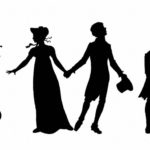
Co-sponsored by Full Circle Farm, with generous support from: The Jane Austen Society of North America, Maine Branch & The Down East Friends of the Folk Arts.